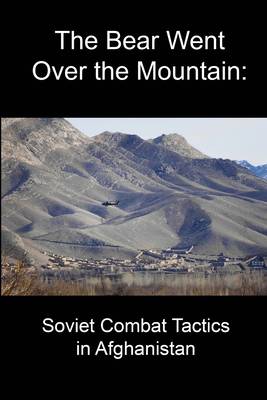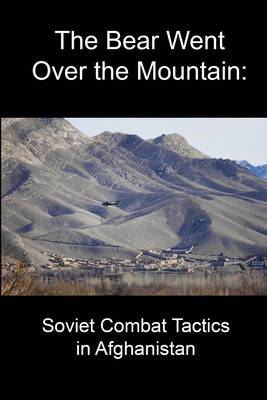
- Afhalen na 1 uur in een winkel met voorraad
- Gratis thuislevering in België vanaf € 30
- Ruim aanbod met 7 miljoen producten
- Afhalen na 1 uur in een winkel met voorraad
- Gratis thuislevering in België vanaf € 30
- Ruim aanbod met 7 miljoen producten
Zoeken
The Bear Went Over the Mountain
Soviet Combat Tactics in Afghanistan
Lester W Grau, David M Glantz, National Defense University Press
Paperback | Engels
€ 23,45
+ 46 punten
Uitvoering
Omschrijving
When the Soviet Union decided to invade Afghanistan, they evaluated their chances for success upon their experiences in East Germany, Hungary and Czechoslovakia. Unfortunately for their soldiers, as well as the people of Afghanistan, they ignored not only the experiences of the British in the same region, but also their own experience with the Basmachi resistance fighters in Central Asia from 1918-1933. Consequently, in Afghanistan the Soviet army found its tactics inadequate to meet the challenges posed by the difficult terrain and the highly motivated mujahideen freedom fighters. To capture the lessons their tactical leaders learned in Afghanistan and to explain the change in tactics that followed, the Frunze Military Academy compiled this book for their command and general staff combat arms officers. The lessons are valuable not just for Russian officers, but for the tactical training of platoon, company and battalion leaders of any nation likely to engage in conflicts involving civil war...
Specificaties
Betrokkenen
- Auteur(s):
- Uitgeverij:
Inhoud
- Aantal bladzijden:
- 262
- Taal:
- Engels
Eigenschappen
- Productcode (EAN):
- 9781304069450
- Verschijningsdatum:
- 25/05/2013
- Uitvoering:
- Paperback
- Formaat:
- Trade paperback (VS)
- Afmetingen:
- 152 mm x 229 mm
- Gewicht:
- 390 g

Alleen bij Standaard Boekhandel
+ 46 punten op je klantenkaart van Standaard Boekhandel
Beoordelingen
We publiceren alleen reviews die voldoen aan de voorwaarden voor reviews. Bekijk onze voorwaarden voor reviews.











